As a toucan owner in the sunny Caribbean, we’re navigating our first full mating season with our three Toco toucans: Paco, Paz, and Pepe. Behavioral shifts started in February, and sources like the Animal Diversity Web indicate Toco toucan breeding seasons vary by region but can extend into late summer or September for captive birds. This period offers fascinating insights into Toco toucan mating behaviors, observing both a bonded pair (Paz and Pepe) and our single “pet” Paco, who has chosen me as his mate.
Sharing Treats and Toys
One hallmark of Toco toucan mating behaviors is the ritualistic sharing of food or toys, where the male typically offers gifts to the female before mating. According to observations from avian experts and sites like Birds of the World, this back-and-forth passing strengthens pair bonds and can repeat multiple times until accepted. Pepe frequently presents Paz with pellets, fruit pieces, treats, or even toys; she may accept sweetly or hop away, leaving him pleading vocally in pursuit.
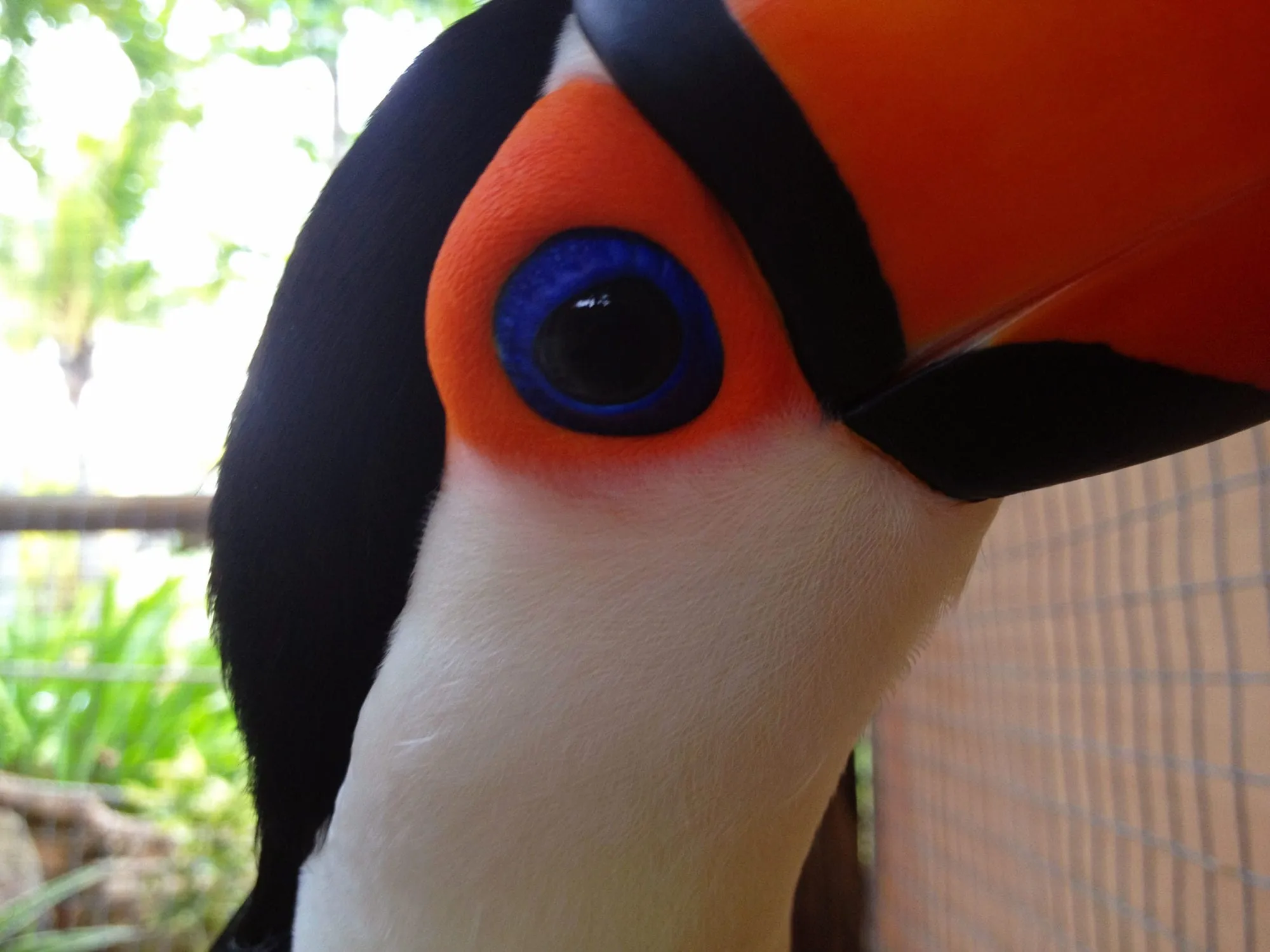 Toco toucans Pepe offering a gift to Paz during courtship ritual
Toco toucans Pepe offering a gift to Paz during courtship ritual
Paco mirrors this with me, grabbing fruit upon my approach, purring excitedly, and insisting I take it. We pass it back and forth—sometimes over 10 times—before he eats it or I pretend to. Note that his “gifts” are often partially regurgitated, a common courtship regurgitation in pet toucans, as described by avian vets on For The Birds DVM. Watch this short example: Paco sharing treats.
New Vocalizations
Toco toucans reveal surprising new sounds during breeding season, expanding beyond their usual purring example and croaking example. Paz and Pepe produce demon-exorcising-like calls during nest prep, while Pepe chuffs insistently when offering gifts. Paco whines softly (“eeeeeee”) to invite snuggling or nest entry and purrs contentedly during petting.
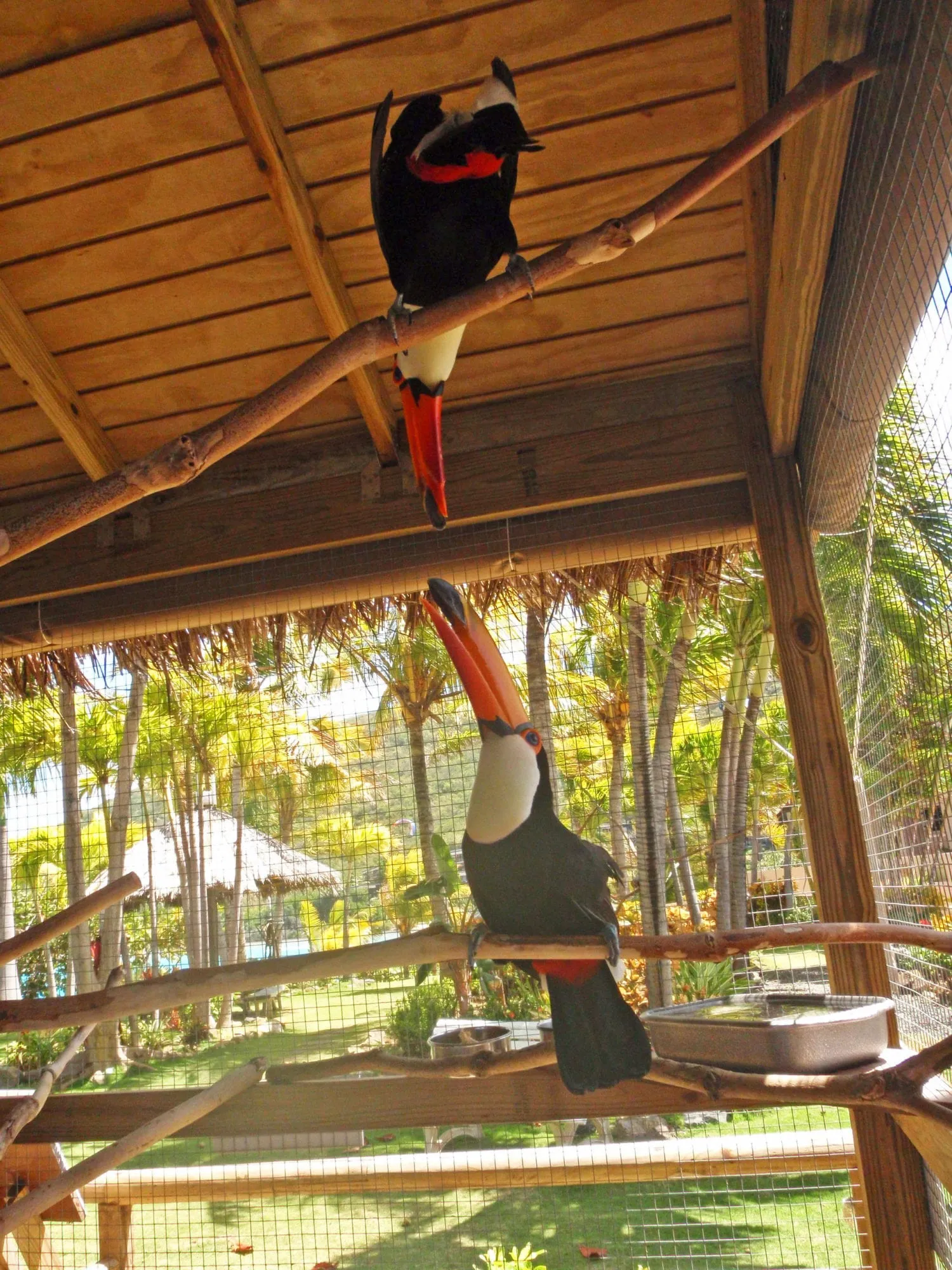 Close-up of Toco toucans displaying vocal courtship signals
Close-up of Toco toucans displaying vocal courtship signals
These vocalizations align with hormonal surges triggered by longer daylight, per SeaWorld’s Toco toucan facts. Hear Pepe’s chuffing here: Pepe’s desperate toy offer. Pet owners should monitor these as signs of elevated hormones, avoiding reinforcement to prevent escalation.
Nesting Behaviors
Providing nest logs has intensified activity for all three toucans. They carry fruit to entrances, perch, purr, and bob heads—practicing feeding without dropping it, ultimately eating the fruit themselves. Sources like the Louisville Zoo confirm Toco toucans nest in tree hollows, reusing them yearly, with incubation around 16-20 days for 2-4 eggs.
 Toco toucan practicing feeding at nest log entrance
Toco toucan practicing feeding at nest log entrance
Paz and Pepe slap beaks on entrances to call each other, while Paco enthusiastically invites me with purrs and beak-slaps. See Paco welcoming from inside: Paco’s nest invitation. For pet owners, limit nest access during off-season to curb hormonal behaviors, as advised by Toucan Teach.
Actual Mating
Paz and Pepe mate openly, mornings and evenings, even above me during cleaning—leading to successful eggs, as shared in our first egg adventure. Toco toucans breed once yearly post-maturity (3-4 years), per Wikipedia and Rancho Texas. Paco attempts mating with my legs, humping dog-like, likely due to their length contrasting his short legs.
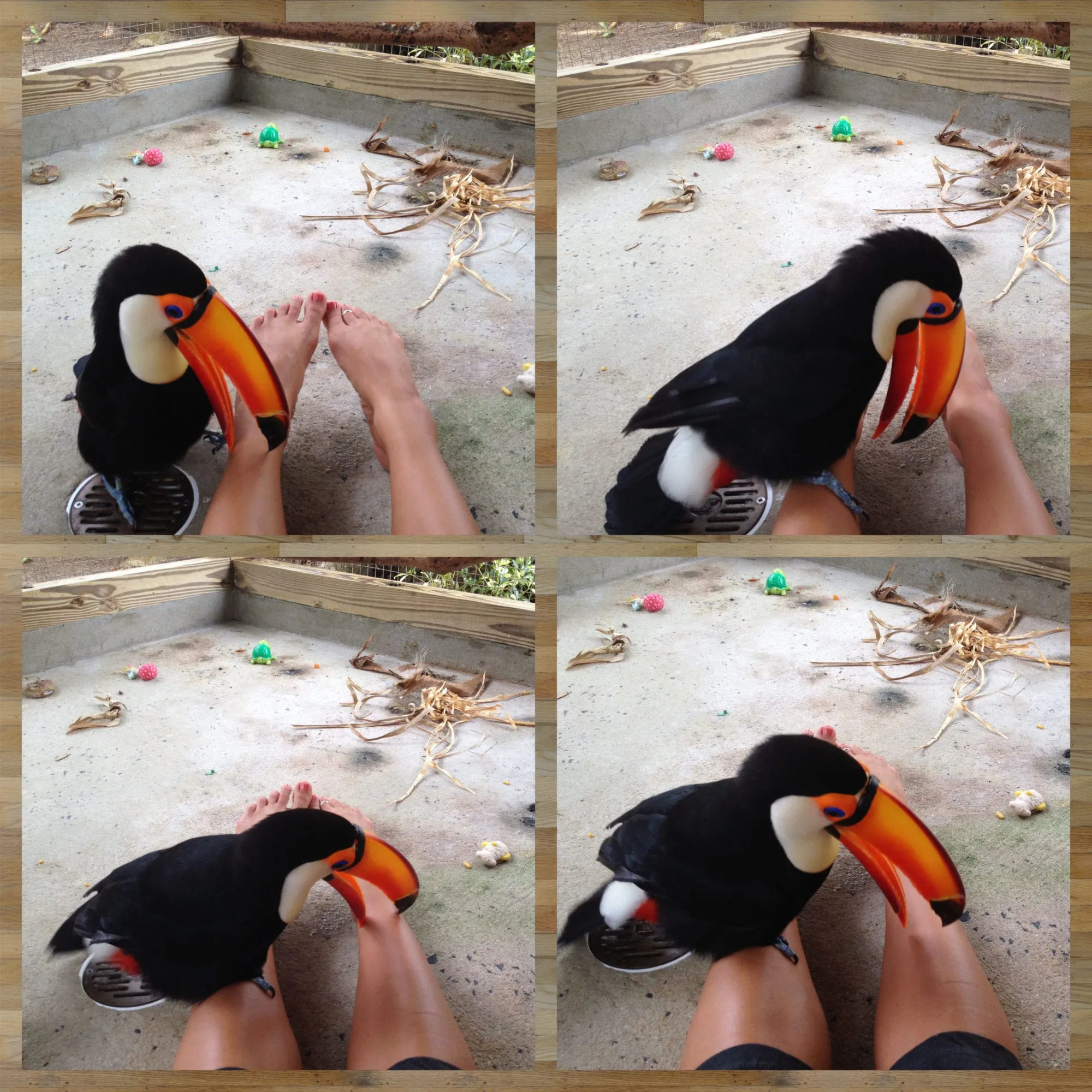 Bonded Toco toucan pair during mating
Bonded Toco toucan pair during mating
Redirect promptly with tricks or toys to avoid frustration. Paco forgets quickly, showing no aggression. Watch his attempt: Paco’s mating behavior. Avian experts recommend environmental changes like reduced daylight to manage this in pets.
Increased Cuddling
Paco craves extended snuggle sessions—up to 10 minutes multiple times daily—eyes closed, beak on shoulder. While possibly relationship-deepening, it’s linked to mating season per pet bird resources like BirdTricks. Limit petting to head/neck to avoid sexual stimulation elsewhere on the body.
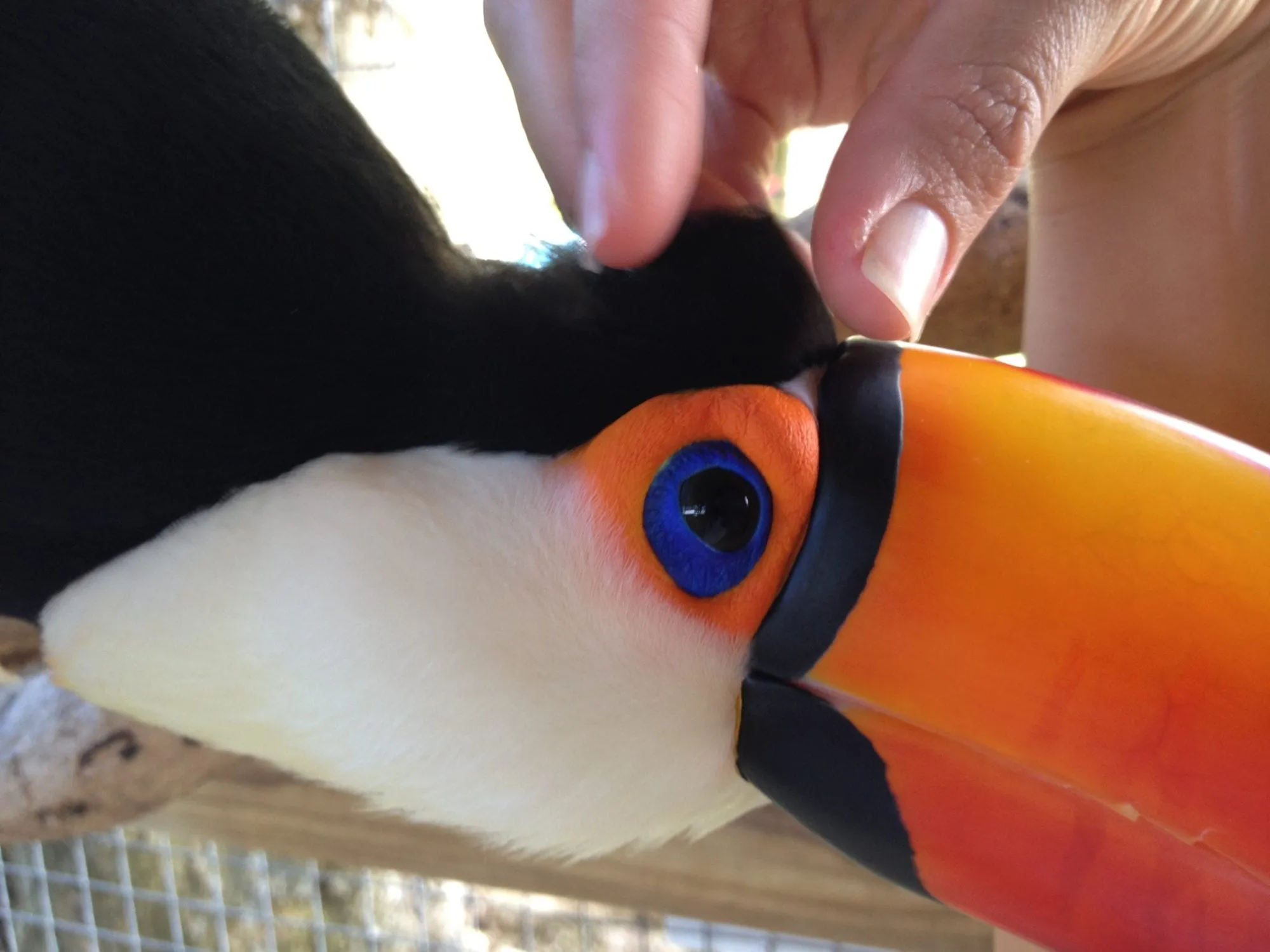 Paco toucan enjoying cuddle time with owner
Paco toucan enjoying cuddle time with owner
This aligns with general parrot hormonal upticks, including toucans, causing over-attachment. Catch Paco’s session: Paco snuggling. Owners should balance affection with training to maintain trust without fueling hormones.
More Frequent UTEs (Unidentified Toucan Emergencies)
Outside breeding, croaking signals clear threats like kitesurfers. Now, random UTEs occur—sudden croaking sans obvious cause—from my human view. Hormonal moodiness amplifies this, common in breeding birds per Pamela Clark CPBC.
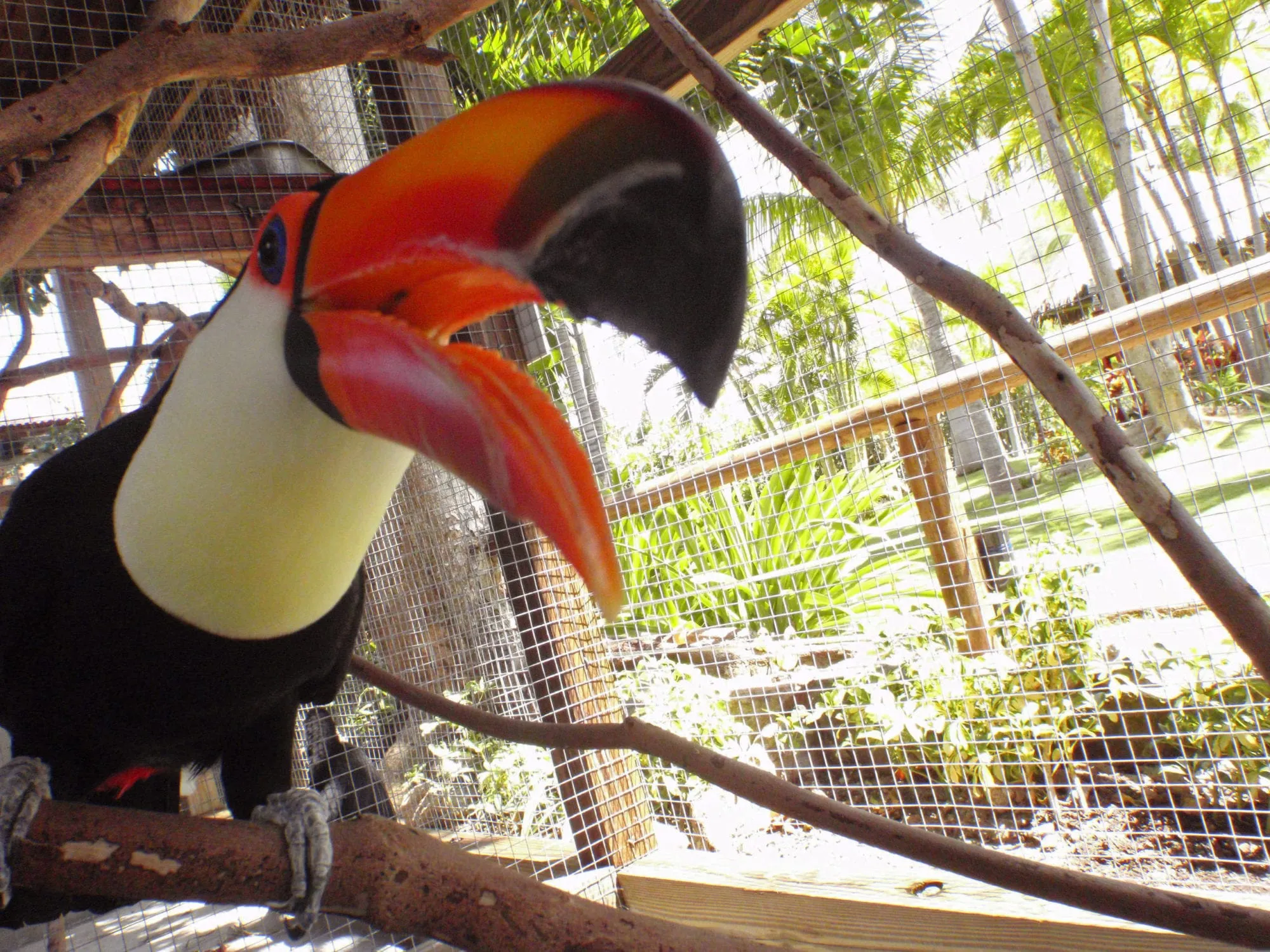 Toco toucans in a moment of unexplained alarm croaking
Toco toucans in a moment of unexplained alarm croaking
Example: Prime UTE footage. Patience and presence soothe them, but consult avian vets for persistent issues.
Aggression and Territorialism
Nesting heightens protectiveness; Paz and Pepe snap at us near nests/toys/food. Pepe pecks defensively, Paz shows rare bravado. Read body language closely—redirect with training like perch cues.
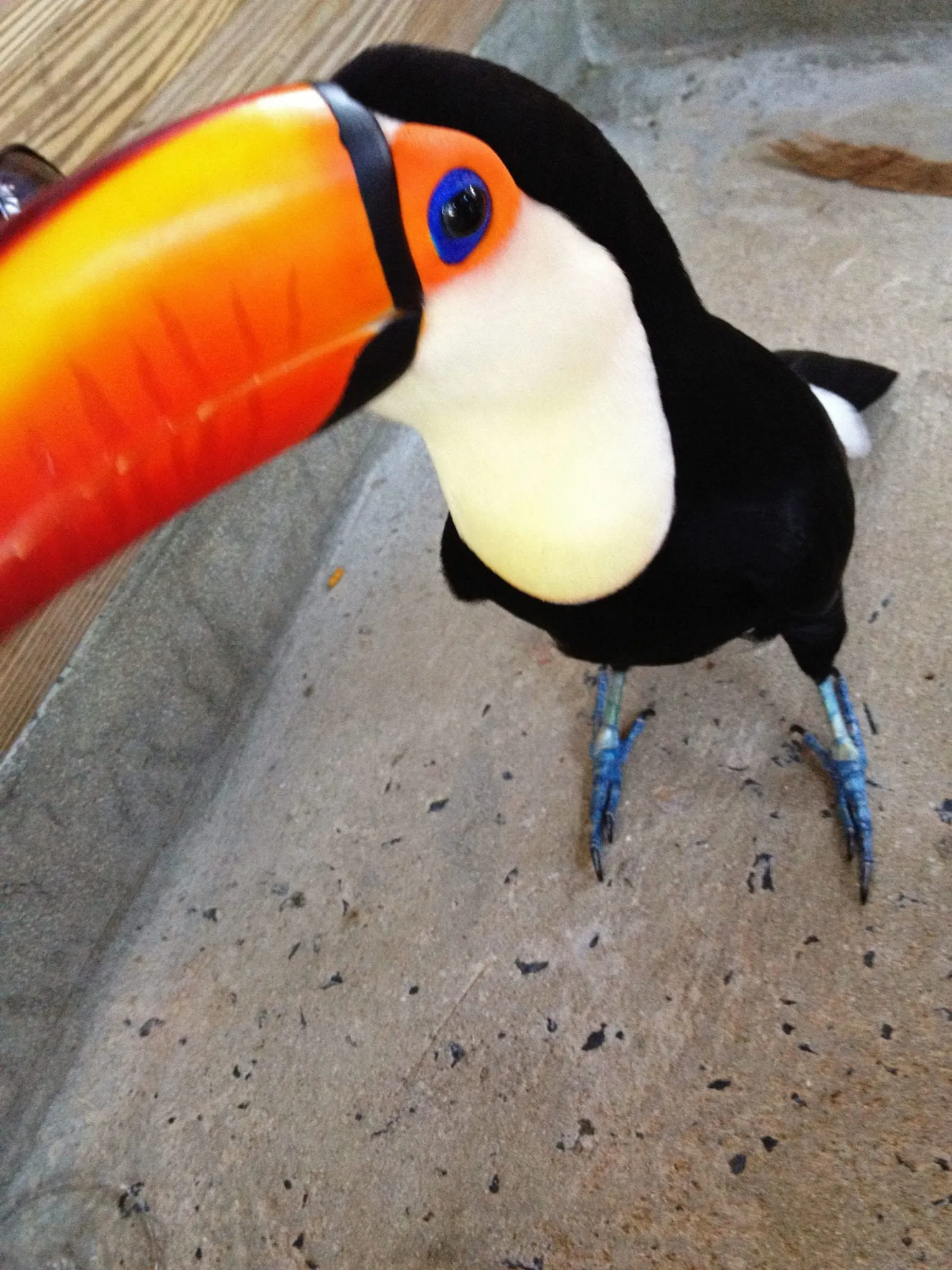 Toco toucans displaying territorial aggression
Toco toucans displaying territorial aggression
They beak-fence briefly example. Paco remains tolerant with me, less so with others—ongoing training. Compared to severe cases elsewhere, ours is manageable.
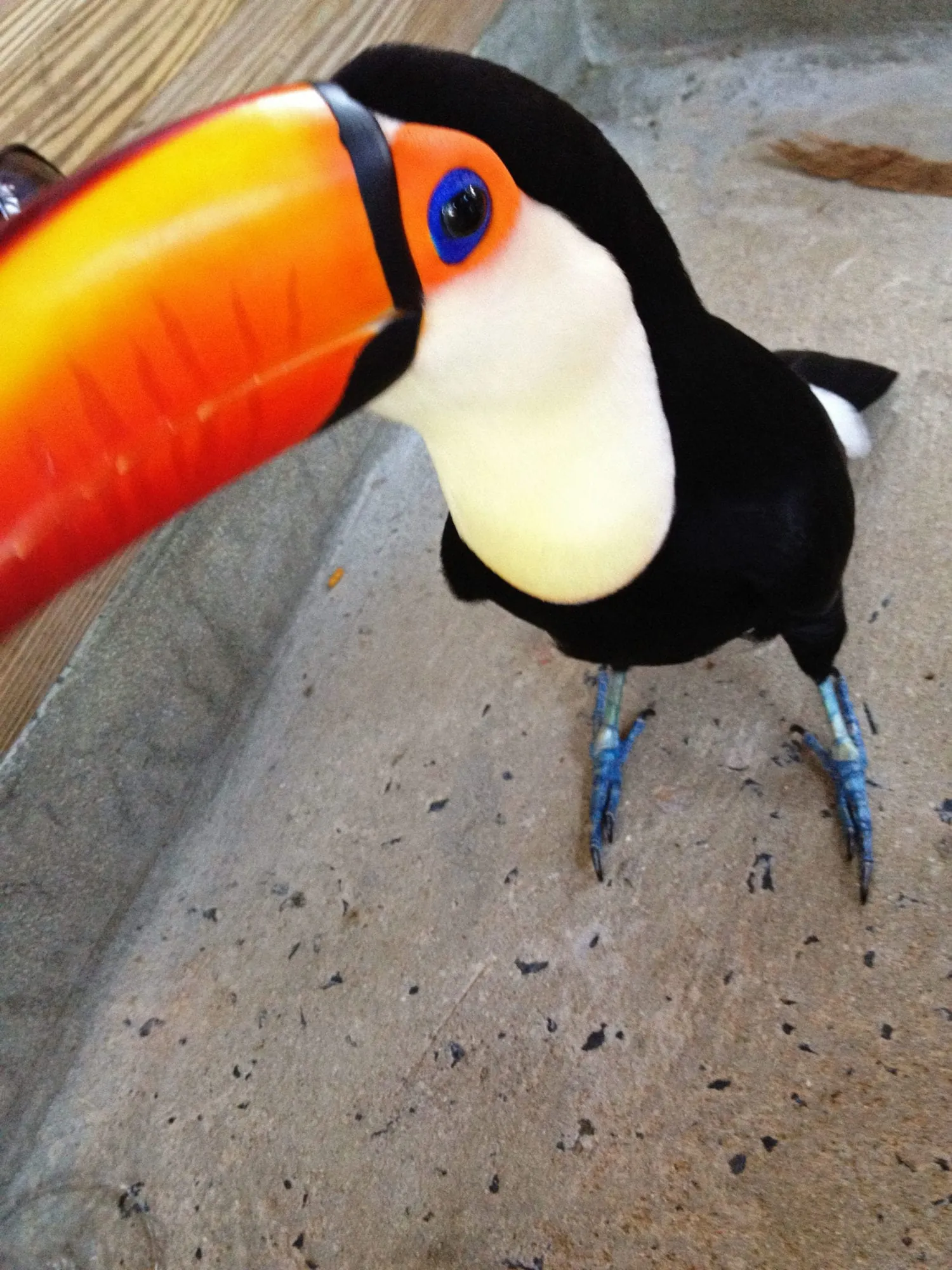 Aggressive territorial display between toucans
Aggressive territorial display between toucans
Overall, Toco toucan mating behaviors bring challenges but deepen bonds when handled right. Redirect, limit triggers, and train consistently for harmony. Though eager for season’s end, these insights aid fellow owners. Consult an avian veterinarian for personalized advice, and share your experiences in comments!
References
- Short, L.L. & Horne, J.F.M. (2001). Toucans, Barbets and Honeyguides. Oxford University Press. (Cited in Birds of the World)
- Animal Diversity Web: Ramphastos toco
- SeaWorld: Toco Toucan Facts
- For The Birds DVM: Hormonal Behavior in Pet Birds
- Adventures in Toucanland (original observations, 2012)
